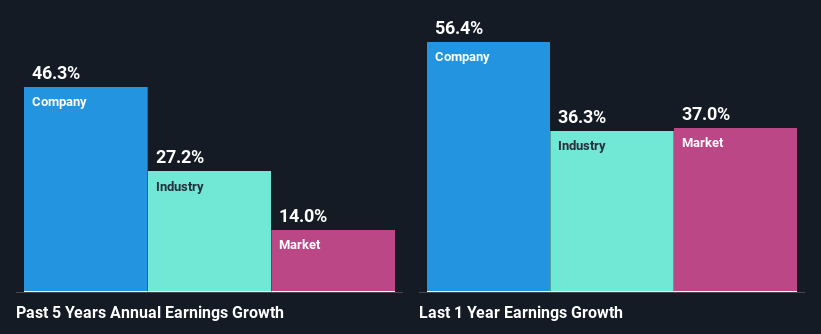Most readers would already be aware that Amazon.com’s (NASDAQ:AMZN) stock increased significantly by 8.3% over the past month. Given that the market rewards strong financials in the long-term, we wonder if that is the case in this instance. Particularly, we will be paying attention to Amazon.com’s ROE today.
Return on Equity or ROE is a test of how effectively a company is growing its value and managing investors’ money. In other words, it is a profitability ratio which measures the rate of return on the capital provided by the company’s shareholders.
See our latest analysis for Amazon.com
How Do You Calculate Return On Equity?
Return on equity can be calculated by using the formula:
Return on Equity = Net Profit (from continuing operations) ÷ Shareholders’ Equity
So, based on the above formula, the ROE for Amazon.com is:
24% = US$33b ÷ US$138b (Based on the trailing twelve months to December 2021).
The ‘return’ refers to a company’s earnings over the last year. So, this means that for every $1 of its shareholder’s investments, the company generates a profit of $0.24.
What Has ROE Got To Do With Earnings Growth?
We have already established that ROE serves as an efficient profit-generating gauge for a company’s future earnings. Depending on how much of these profits the company reinvests or “retains”, and how effectively it does so, we are then able to assess a company’s earnings growth potential. Generally speaking, other things being equal, firms with a high return on equity and profit retention, have a higher growth rate than firms that don’t share these attributes.
A Side By Side comparison of Amazon.com’s Earnings Growth And 24% ROE
First thing first, we like that Amazon.com has an impressive ROE. Further, even comparing with the industry average if 20%, the company’s ROE is quite respectable. Given the circumstances, the significant 46% net income growth seen by Amazon.com over the last five years is not surprising.
As a next step, we compared Amazon.com’s net income growth with the industry, and pleasingly, we found that the growth seen by the company is higher than the average industry growth of 27%.
The basis for attaching value to a company is, to a great extent, tied to its earnings growth. What investors need to determine next is if the expected earnings growth, or the lack of it, is already built into the share price. This then helps them determine if the stock is placed for a bright or bleak future. Is Amazon.com fairly valued compared to other companies? These 3 valuation measures might help you decide.
Is Amazon.com Using Its Retained Earnings Effectively?
Amazon.com doesn’t pay any dividend to its shareholders, meaning that the company has been reinvesting all of its profits into the business. This is likely what’s driving the high earnings growth number discussed above.
Summary
On the whole, we feel that Amazon.com’s performance has been quite good. Particularly, we like that the company is reinvesting heavily into its business, and at a high rate of return. Unsurprisingly, this has led to an impressive earnings growth. That being so, a study of the latest analyst forecasts show that the company is expected to see a slowdown in its future earnings growth. To know more about the latest analysts predictions for the company, check out this visualization of analyst forecasts for the company.
Have feedback on this article? Concerned about the content? Get in touch with us directly. Alternatively, email editorial-team (at) simplywallst.com.
This article by Simply Wall St is general in nature. We provide commentary based on historical data and analyst forecasts only using an unbiased methodology and our articles are not intended to be financial advice. It does not constitute a recommendation to buy or sell any stock, and does not take account of your objectives, or your financial situation. We aim to bring you long-term focused analysis driven by fundamental data. Note that our analysis may not factor in the latest price-sensitive company announcements or qualitative material. Simply Wall St has no position in any stocks mentioned.










